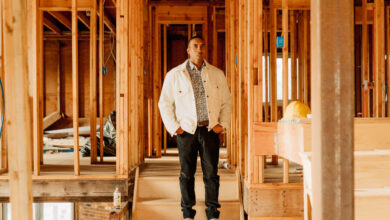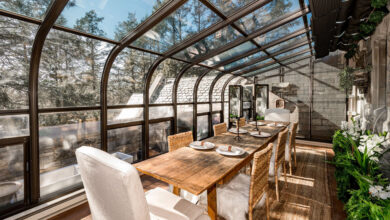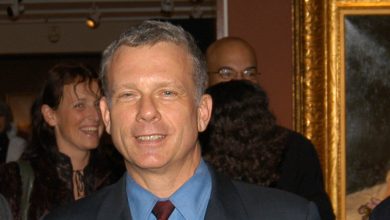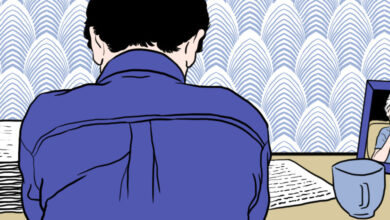House Hunting in South Africa: Carved Into a Mountain in Cape Town

A Five-Bedroom Beneath Table Mountain in Cape Town
$4.7 MILLION (79.995 MILLION RAND)
This five-bedroom home backs onto the slopes of Table Mountain in Oranjezicht, a suburb of Cape Town, South Africa. Set on about three quarters of an acre, the home is designed to mimic the landscape of the mountain, a prominent landmark, with a wavy concrete roof and ample use of wood and stone.
“The house is literally built into the mountain,” said Riaan Ackerman, an agent with Pam Golding Properties, which has the listing. “The owners wanted it to be a bit of a sanctuary. They enjoy meditation and going on health retreats. So it was very much about creating a retreat as a home.”
Built in 2011, the house was among the first in the area to have an “eco-pool,” a swimming pool that uses plants and microorganisms, rather than chemicals, to purify the water, Mr. Ackerman said. The pool is heated by solar panels, which are also used to provide backup power during outages.
The home’s ground-level spa room is at one end of the pool, and the front can be opened up to make it directly accessible to swimmers. It has a sauna, hot tub, shower and a hammam with red Zellige tiles made in Zimbabwe.
A concrete staircase ascends to the home’s glass front entrance one level above. A hallway opens to the main living and dining area, a large, airy space with a double-sided fireplace and black granite floors. Glass walls slide away on one side to open the room to a dining terrace with retractable awnings.
On the other side of the room is a striking wall of backlit bookshelving that extends to the floor below. Stairs from the living room lead down the length of the library to the ground-level yoga studio, which is flanked by two office spaces. This floor also has a theater room and wine cellar.
A large kitchen is to the other side of the entry hall. It has a long, stainless-steel island with built-in Gaggenau and Viking appliances. There is a separate scullery off the kitchen, as well as two guest bedrooms with en suite baths. A stairway from the kitchen goes down to the attached three-car garage, laundry facilities and staff accommodations.
Up another level is the primary suite and what the owners use as a children’s wing. The primary suite has a glass wall that opens to the outside, a wraparound wooden terrace, a dressing room and a bathroom with a free-standing tub. The children’s wing has two bedrooms with en suite baths and a large shared room.
The fenced property also has a free-standing cottage with a bedroom, kitchen and bath. Both the cottage and the house have underfloor heating throughout.
Oranjezicht is within minutes of Cape Town’s Kloof and Bree streets, which are lined with restaurants, cafes and nightclubs. The popular Camps Bay Beach on the city’s Atlantic coast is a 10-minute drive, and Cape Town International Airport is about 20 minutes away.
Market Overview
With roughly 180 miles of coastline and 4.4 million residents, Cape Town is the largest city in South Africa’s Western Cape province. The upper end of the housing market is booming, driven in large part by European buyers
“Cape Town has become the flavor of the month,” said Sean Phillips, a sales associate with RE/MAX Living. “We’re having more really well-to-do clients that are upbeat about the way things are going in South Africa and are feeling confident about investing here.”
Nationally, sales transactions during the second quarter of 2022 were up 32 percent over the same period last year, according to a market report from RE/MAX of Southern Africa. The average price for a single-family home was 1.42 million rand ($85,000), an increase of 8 percent over last year.
The Western Cape, which has borders on the Atlantic and Indian Oceans, is South Africa’s most active and most expensive market, with a median asking price of 2.5 million rand ($150,000).
In Cape Town, entry-level activity — between 3 million and 6 million rand ($180,000 and $360,000) — has slowed since last November, when interest rates began to rise, Mr. Ackerman said. Rates are now around 9 percent — high compared with the U.S. but not unusual for South Africa.
But most high-end international clients pay in cash, and are unaffected by the rise in rates, Mr. Phillips said. In the highly desirable Camps Bay area, on Cape Town’s Atlantic coast, properties in need of work start at around 10 million rand ($600,000), he said, noting that in the past year, there have been four sales at around 50 million rand ($3 million) in the Camps Bay area.
“That’s a nice four-bedroom home with spectacular views, excellent workmanship, a home intelligence system, automated blinds, an elevator,” he said. “It could be on the water’s edge or on a top floor.”
Sought-after locations also include Cape Town’s southern suburbs, namely Constantia and Upper Claremont, thanks to their proximity to schools, parks and wine estates, said Richard Olotu, an agent with Knight Frank. He also pointed to new luxury developments going up in Cape Town’s central business district.
Who Buys in Cape Town
Cape Town, the oldest and second-largest city (after Johannesburg) in South Africa, has long been an attractive investment destination for Europeans, in part because it’s in the same time zone as Central Europe, and offers a warm retreat during their winter, said Paul Turner, the owner of Engel & Völkers Atlantic Sea Board and City Bowl.
A majority of foreign buyers come from Germany, Britain and the Netherlands, but there are also some from Italy, France and Switzerland, he said.
Americans are turning up much more frequently now that there are direct flights to Cape Town from the U.S. Mr. Phillips said he recently sold a property sight unseen to two doctors from Atlanta. Having previously visited Cape Town and lost out on a property they bid on, they decided to move quickly when Mr. Phillips gave them a virtual tour of another after they had returned home.
“They arrived about six weeks later and were pleasantly surprised with what they’d bought,” he said.
Buying Basics
There are no restrictions on foreign buyers in South Africa, and the buying process is straightforward, Mr. Turner said.
Foreign investors may only borrow a maximum of 50 percent of the value of the property they are purchasing. “But because of our high interest rates, most foreign investors are not interested in borrowing locally anyway,” he said.
A lawyer, called a conveyancer, handles the transaction, including seeing to the proper transfer of the deed. The seller selects the conveyancer, but the fee is paid by the buyer. Total transaction fees vary depending on the price of the property, but they generally come in at around 10 percent of the purchase price, Mr. Olotu said.
Nonresidents must pay a tax on any capital gain when they sell a property.
Websites
Languages and Currency
South Africa has 11 official languages; Afrikaans and English are widely spoken.
South African rand (1 rand = $0.06)
Taxes and Fees
A transfer duty is charged on a sliding scale, starting at 3 percent for properties selling for more than 1 million rand ($60,000). The top rate of 13 percent is due on that portion of a property above 11 million rand ($660,000).
Property taxes on this home are 16,500 rand ($990) a month, according to Mr. Ackerman.
Contact
Riaan Ackerman and Karin Coetzee, Pam Golding Properties, 011-27-21-276-3233
For weekly email updates on residential real estate news, sign up here. Follow us on Twitter: @nytrealestate.






